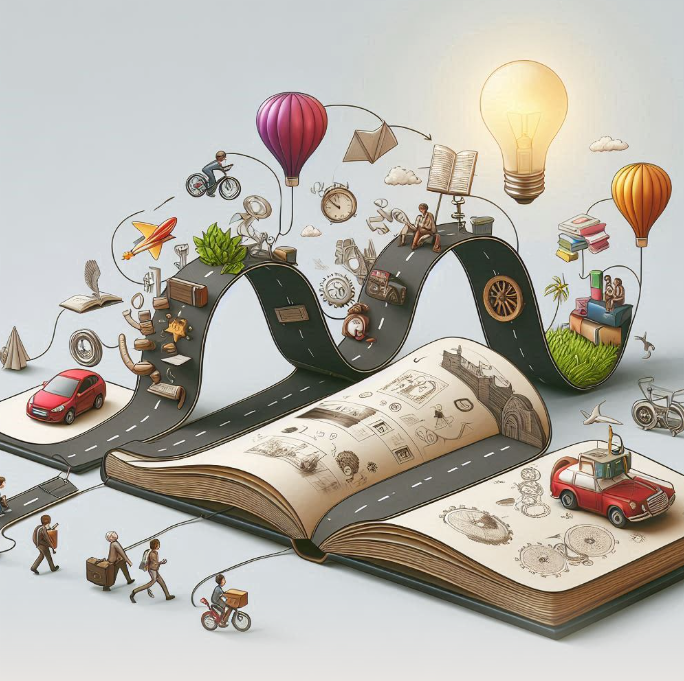One of the most important factors when writing a book is the target age group. Every demographic, from early learners to the elderly, requires a unique approach in terms of language, elements of storytelling, and structure. In this article, we will outline the key points to be considered for book writing for early learners, young children, tweens, older teens, adults, and even the elderly. By the end of the article, you will gain knowledge to help improve your writing process.
1. Early Learning (0-5 Years)
Vocabulary and Language: The use of simple, repetitive words is ideal. The words should be familiar and teach the kids the language. Instead of elaborated descriptions, simple terms like “cat,” “tree,” or “play” would be more suitable.
Grammar Complexity: The sentences, must be short and concise. Most of them should contain three words. Grammar must be simple without compound structures.
Illustrations and Pictures: Pictures tell the story best. Bright and colourful illustrations on every page match the text and give new readers a chance to relate words to pictures.
Plot and Characters: The storylines should centre around a simple rationale or theme, such as “a day at the park.” The characters are usually animals or other figures to which children can easily relate, with straightforward and well-contrasted characteristics.
Word Count: Approximately 200-500 words per title.
Extra Hint: Interactive elements, such as textured pages or flaps to lift, are going to help with their sensory development.
2. Picture Books for Younger Children-Age 6-8
Vocabulary and Language: Introduce some challenging words, but still, they should be appropriate for this age group. Words are supposed to build confidence and support phonetic investigation.
Grammar Complexity: Sentences can be a little longer with basic conjunctions. Rhyming schemes and rhythmic text will lead to engaging and memorable stories.
Images and Illustrations: Although pictures are still the focus, they need to allow for a portion of imagination. The illustrations must not dominate the story but rather complement it.
Plot and Characters: The storyline should be simple with a clear beginning, middle, and end. Characters can demonstrate a broader range of emotion. Stories very often include a moral or lesson.
Word Count: Approximately 500-1,500 words.
More Advice: Books can continue to reinforce developing literacy skills and might include light humour or relatable challenges to the child, such as making friends or achieving a new skill.
3. Tweens (9-12 years)
Vocabulary and Language: The vocabulary should be more substantive and include more description with adjectives, and conversation among characters should be age-appropriate.
Grammar Complexity: Sentences can include dependent clauses with more complicated grammatical structures. Kids this age also love to have humour, word play and clever phrasing.
Illustrations and Images: Very few or none at all. Chapter books can have some illustrations to break up the text but should help to promote imagination through descriptive text.
Plot and Characters: The plot can be more complex, with subplots included and the development of the characters. The themes can address friendship, adventure, and self-discovery. Characters are allowed to be flawed and multidimensional.
Word Count: The typical amount ranges from 10,000 to 30,000 words for chapter books.
Additional Hint: Consider your protagonist relatable and often closer to the age of the reader. Add a little complexity to pave the way for problem-solving and resilience.
4. Older Teenagers (Age 13-18 years)
Vocabulary and Language: The same degree of difficulty teenagers face in real life. Themes should be linked with their increasing perception about the world.
Grammar Complexity: Grammar can be more complex, including multiple sentence structures that are challenging yet not bewildering to the reader. Voices of the writing should be representative of actual teenagers; the dialogue should be natural and realistic.
Plot and Characters: The plot can use richer themes, such as identity, relationships, and social justice issues. The characters can have more dimensions, showing some development and change throughout the story. Often, there are subplots that add further depth to the story.
Word Count: Generally 40,000-80,000 words for novels.
Additional Tip: Create relatable, realistic characters. Emotional intensity should be in proportion to teenagers’ stage of development. Action needs quiet moments of balance.
5. Adult (19-64 Years)
Vocabulary and Language: It should be variants for each genre and category of target audience, for example, between literary fiction and commercial thrillers. It needs to engage with a more expanded vocabulary that assumes a higher reading level.
Grammar Complexity: Complex grammatical structures can be freely used. Stylistic effects appear, such as changes of narrator or tense, for instance.
Plot and Characters: The plot lines may be very involved, at times with numerous subplots and a few fully fleshed-out characters. The themes can speak to many human experiences-romance, ambition, loss, etc.
Word Count: Generally 70,000-100,000+ words – again, that will depend on the genre.
Extra Tip: Pacing needs to be fitting for the tone of the book. In works of literature, there can be a slower, more reflective pace, while genre fiction, like thrillers, needs to move fast and be page-turning.
6. Older Adults (65+)
Language and Vocabulary: The language should be clear and interesting, without too much simplicity or technicalities. Themes might involve reminiscence, legacy, or lifelong learning.
Grammar Complexity: Varied sentences; however, not unnecessarily complicated. Clarity guarantees readability.
Plot and Characters: At times, characters can be more appealing when they are relatable or mirror life experiences similar to that of the readers. Plots might be introspective, having themes centred on second chances, going back in time, or lifetime dreams.
Word Count: Dependent on genre and purpose; however, conciseness is valued.
Additional Tip: Be considerate about any vision problems—bigger font sizes and provided formats make the read easier to the audience.
Conclusion
Writing a book that interests the targeted age group involves knowing their stage of development, their level of understanding of language, and what kind of story appeals to them. Be it a toddler who understands through pictures and repetition of words, or a teenager who wants drama to which they can relate, or an adult who wants something rich and complex. In each case, your approach has to be different. Adhere to these criteria, and you will surely write material that will keep your readers interested and turning the page.
For more writing tips and inspiring stories on how to improve your author journey, make sure to follow the Creator’s Hub.


